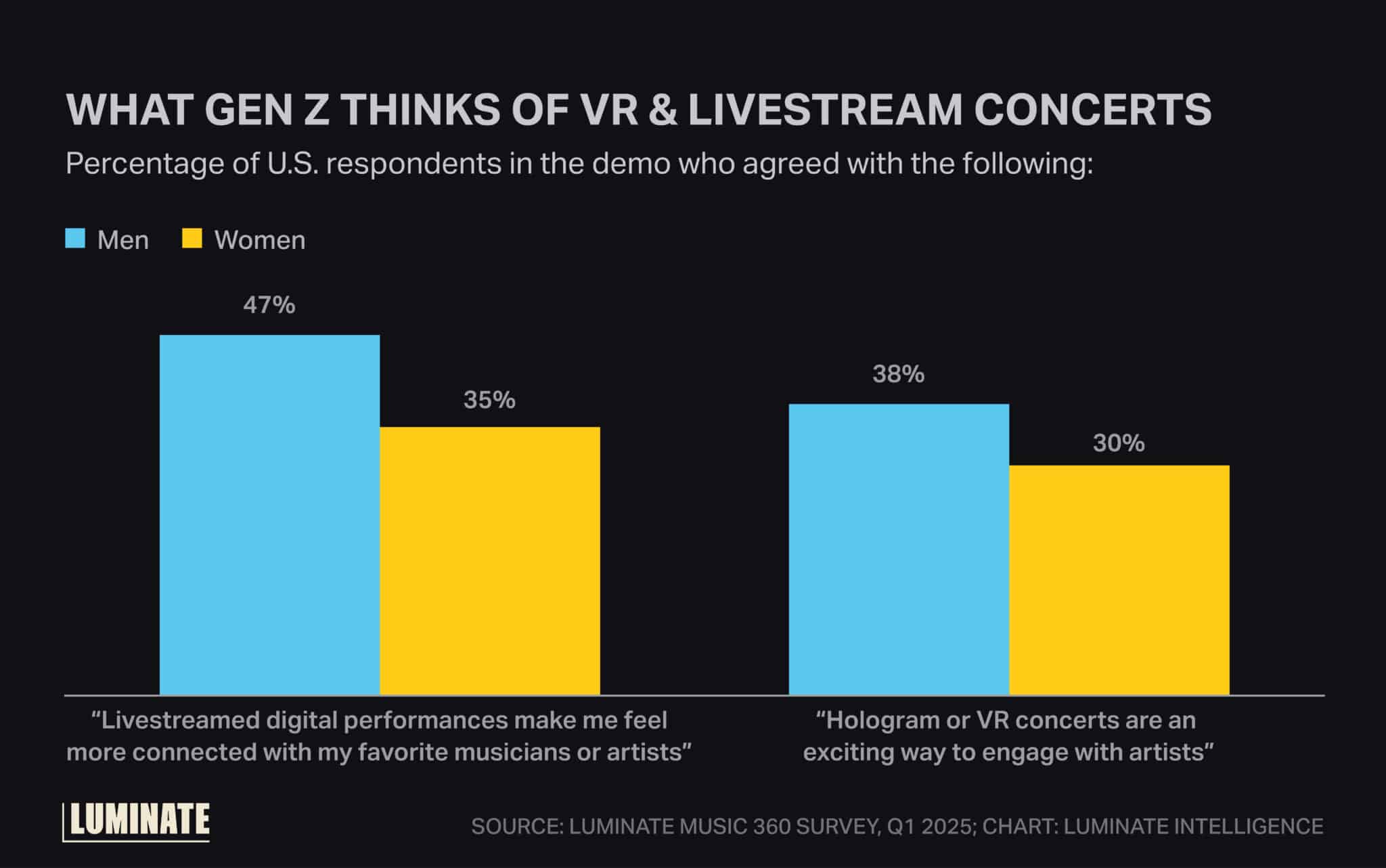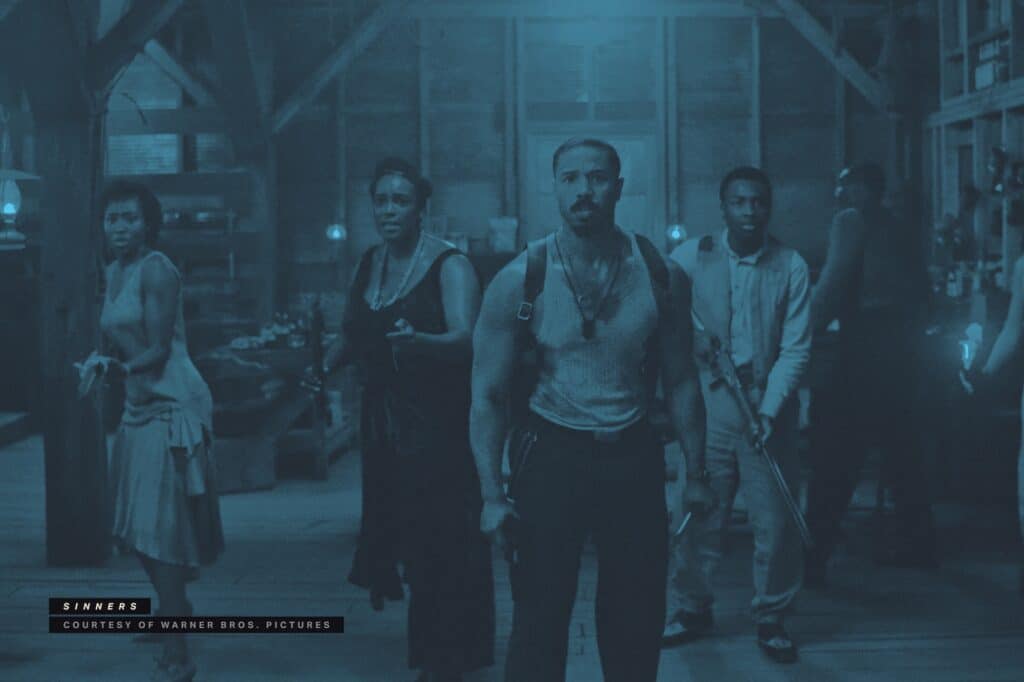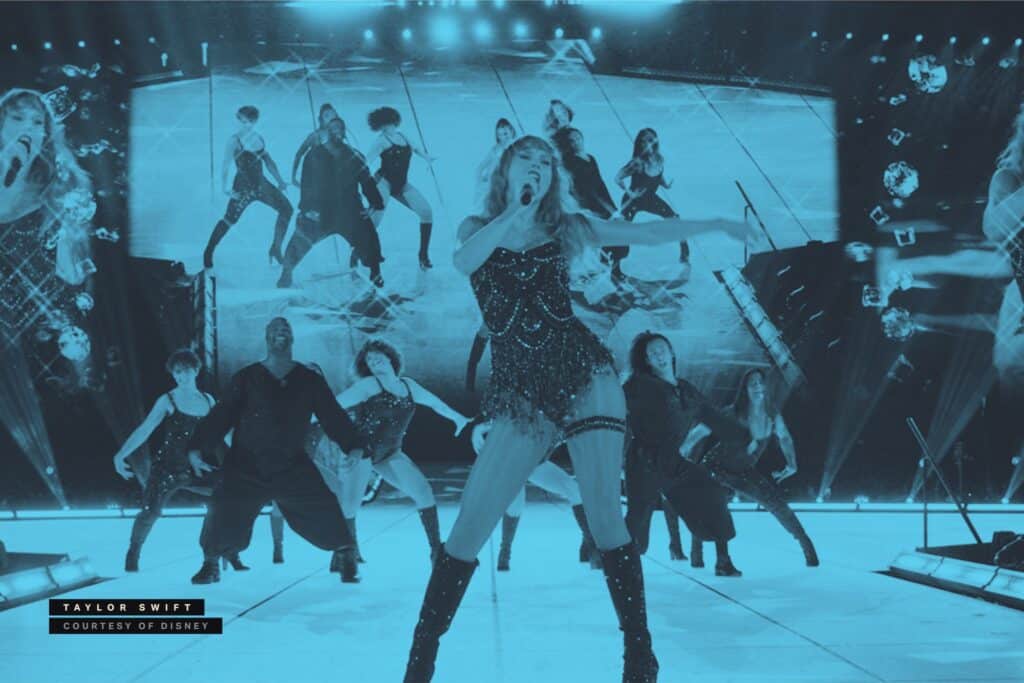Music is a famously fickle business, and 2025 is looking like an exceptionally pivotal year. As streaming growth hits critical mass and the post-pandemic spike in concert attendance slows, industry leaders are looking for ways to diversify income streams and restore some of the value music has lost in the digital age.
The Luminate Intelligence special report Key Changes in the Music Industry analyzes the current wave of opportunities and challenges, such as the pressures weighing on live music. Interestingly, Luminate data shows that one less conventional solution may lie in the small but promising world of virtual and livestreamed concerts.
Livestreamed shows and VR concert experiences gained popularity over the pandemic, as fans still craved their socially distanced live music fix. But the medium didn’t vanish once the world reopened. In fact, organizers of several major music festivals have continued to host official livestreams so fans can tune in remotely, with EDM staple Tomorrowland’s TikTok livestream recently drawing over 74 million viewers across its two weekends.
Regular Fortnite players have probably attended one of the many in-game virtual concerts hosted in recent years, featuring megastars including Ariana Grande, Snoop Dogg and Metallica. And virtual immersive shows will be featured on the soon-to-be-revamped Napster.

Attendance at virtual shows is minuscule compared with in-person concert attendance, and yet the medium may be the answer to a unique trend forming among Gen Z. While Zoomers are avid live music listeners, on track to take the “primary consumer” mantle from Millennials in the near future, they are also the first generation where women outpace men in regular concert attendance.
While Gen Z men may not be attending concerts as frequently, they show a particular openness to virtual shows. According to Luminate’s U.S. Music 360 survey for Q1 2025, almost half of U.S. Gen Z men agreed livestreamed performances would be a good way to connect with an artist they like (vs. 39% of the general population).
Additionally, 38% said a hologram or VR concert could be an exciting way to engage with an artist (vs. 25% of the general population). Creating music experiences that overlap with male Gen Zers’ particular love for gaming and livestreaming may be key to keeping them invested in live music.
Another exciting prospect virtual shows present is their potential to catch on with the industry’s current obsession: Super Fans, the segment of the audience most passionate about music. In Q1 ’25, 59% of U.S. Super Fans said they’d be willing to attend a virtual performance — well outpacing the 24% of the general population who said the same.
Given the buying-power potential of Super Fans, virtual concerts could be a solid way to support their favorite artists and gain exclusive access for themselves.

Getting Super Fans to tune in to virtual shows wouldn’t require much outside-the-box thinking, as 72% of the demo said they would tune in for a virtual concert just to see their favored artists play their hits. A high percentage of Super Fans also said having access to more unique perks — such as a virtual meet-and-greet or a song-request system — would sweeten the deal.
HYBE has already nailed the formula on its Super Fan app Weverse, which promotes exclusive livestreamed concerts as a key feature for paying users. In 2022, for instance, K-pop giants BTS’ farewell-for-now concert drew a whopping 49 million viewers via the Weverse livestream.
But virtual shows are just one of several music frontiers just taking shape this year. To learn more about where things stand and where the industry is potentially going, check out the Key Changes in the Music Industry 2025 special report (link below), a great companion to Luminate’s recently released Midyear Music Report.










